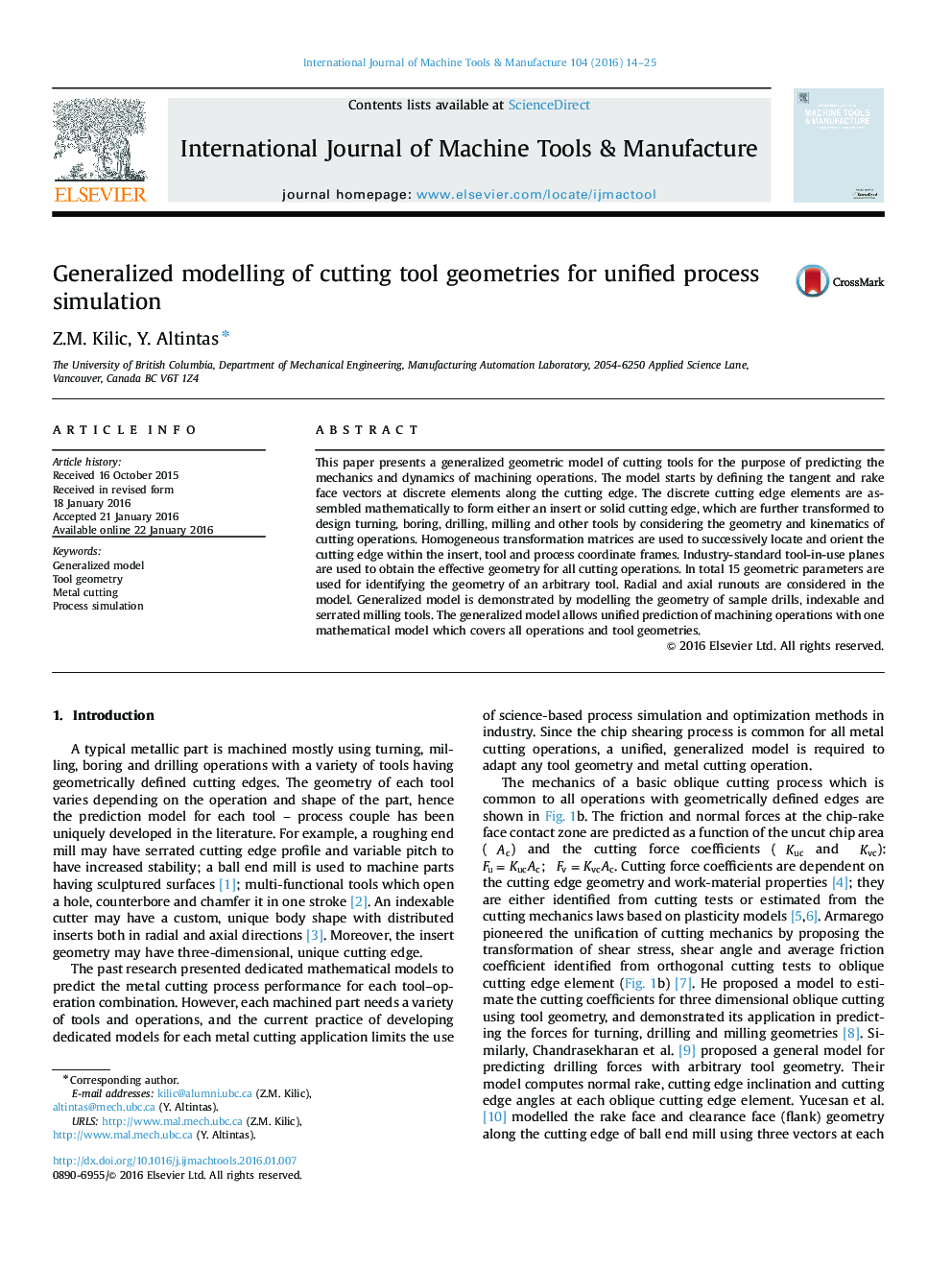| Article ID | Journal | Published Year | Pages | File Type |
|---|---|---|---|---|
| 784290 | International Journal of Machine Tools and Manufacture | 2016 | 12 Pages |
•Geometry of indexable cutters and solid tools is modelled.•The general geometry model is valid for any metal cutting operation.•Industry-standard definitions are used for defining the geometrical parameters.•Homogeneous transformation matrices are used for locating the cutting edge.•The model is suitable for further simulation of forces, vibrations and surface errors.
This paper presents a generalized geometric model of cutting tools for the purpose of predicting the mechanics and dynamics of machining operations. The model starts by defining the tangent and rake face vectors at discrete elements along the cutting edge. The discrete cutting edge elements are assembled mathematically to form either an insert or solid cutting edge, which are further transformed to design turning, boring, drilling, milling and other tools by considering the geometry and kinematics of cutting operations. Homogeneous transformation matrices are used to successively locate and orient the cutting edge within the insert, tool and process coordinate frames. Industry-standard tool-in-use planes are used to obtain the effective geometry for all cutting operations. In total 15 geometric parameters are used for identifying the geometry of an arbitrary tool. Radial and axial runouts are considered in the model. Generalized model is demonstrated by modelling the geometry of sample drills, indexable and serrated milling tools. The generalized model allows unified prediction of machining operations with one mathematical model which covers all operations and tool geometries.
